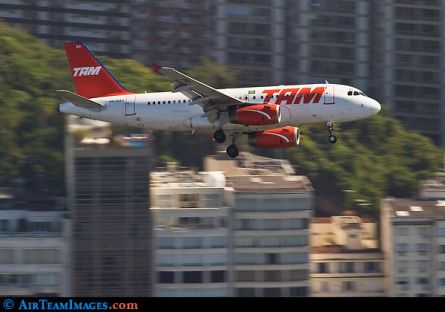It is hardly surprising global alliances have descended on Brazil to try to expand their Latin American presence. Brazil's economy has expanded throughout the global economic crisis and its air transport market growth has been downright stunning. Brazilian carriers collectively grew domestic RPKs 35% in the first quarter of 2010, following similar growth in the second half of last year.
"We are confident the market will keep growing," says TAM chief executive Libano Barroso. "Our estimate is demand in the domestic market will grow [in 2010] between 14% and 18%."
Perhaps more crucially, yields have started to stabilise after plummeting in 2009 as new low-cost competition led to brutal air fare wars. "Competition has been more and more rationale," Barroso says. "We have demand and all companies are trying to improve loads and yields in a more intelligent way than discounting across the board." Brazil's carriers ended the first quarter with an average domestic load factor of 72%, compared with 64% in the same period last year.
 |
|---|
Gol, which chalked up domestic RPK growth of 38% in the first quarter of this year, has significantly narrowed the gap between Brazil's two largest carriers (see table). But TAM is confident its acquisition of regional carrier Pantanal and entry into Star Alliance will help maintain its position as the market leader.
TAM formally joins Star in May, filling the alliance's gap in the region since Varig's departure in 2006. Barroso says joining Star gives TAM the ability to expand internationally on a virtual basis, without incurring the risk and costs of adding destinations. TAM is not launching any new long-haul destinations this year, instead using its two additional widebodies to open routes from Rio de Janeiro to London and Frankfurt, destinations it already serves from Sao Paulo. The new Frankfurt flight is particularly key as Barroso sees the Lufthansa hub becoming the largest transit point for its passengers heading to Asia, Europe and the Middle East.
TAM, meanwhile, is working on plans for Pantanal, the small independent regional it bought in a bankruptcy court auction last year, which envisions it operating 20 jets with up to 150 seats to medium density cities in Brazil.TAM and its new alliance partners stand to profit as these cities join their networks because Brazil's regional business centres have rapidly growing economies that can use better domestic and international connectivity.
Serving smaller Brazilian cities has long been part of Gol's strategy, including airports that have historically not been served by TAM. Gol, along with Azul and Webjet, believes there is room for more low-cost growth in Brazil as the country's middle class population rapidly expands.
Brazil's smallest major carrier, OceanAir, has steadily lost market share as others have rapidly expanded. But OceanAir, which has not added any capacity since 2007, is expanding this year as it takes three Airbus A319s to supplement its 14 Fokker 100s. The carrier is also being re-branded Avianca to reflect the name of its Colombian sister carrier, which has managed it since 2008.
Growth Not A Priority
Avianca-TACA chief executive Fabio Villegas says the A319s will be used to expand OceanAir's position on trunk routes, including the key Sao Paulo-Rio de Janeiro shuttle route. But he says there are no plans to grow OceanAir's network and Avianca is unconcerned at the fast expansion of Brazilian rivals. "Our priority hasn't been to grow. Our target hasn't been market share. Our focus has been operating performance. The most important thing for us was to have an efficient airline, which we've now achieved," he says, identifying OceanAir's priority going forward as improving connections with other airlines in the Avianca-TACA group, rather than growing market share.
In an odd twist, OceanAir could end up joining TAM in Star. Avianca-TACA is now pondering alliance options, with a decision expected by year-end. Star is considered the frontrunner but SkyTeam and remaining independent are also options.
Before pursuing a merger with Avianca, TACA had submitted an application to join Star. Avianca initially indicated TACA would press ahead with this while Avianca would later make its own alliance decision. But they have since opted to make a joint alliance decision which Villegas says will include all of the group's carriers, including OceanAir and Ecuador's Aerogal.
Wooing Avianca-TACA would be big boost for Star or SkyTeam, given that the group has hubs in six Latin American countries. Oneworld has traditionally been the strongest alliance in the region because member LAN has hubs in four countries. In an attempt to offset the advantage Star will enjoy in Latin America's largest single market once TAM formally joins, oneworld and SkyTeam have been courting Gol. But while the latter has been adding codeshares with carriers from both alliances, including American Airlines and Delta Air Lines, Gol has repeatedly indicated it prefers to stay unaligned.
A LAN-TAM tie-up, mooted earlier this year as Chile president Sebastian Pinera prepared to sell his 26% stake in LAN, could have altered the alliance picture. But none of the stake ended up being sold to other airlines. Instead LAN's largest shareholder, the Cueto family, took another 9% while a mix of investment firms ended up with the rest.
Source: Airline Business























